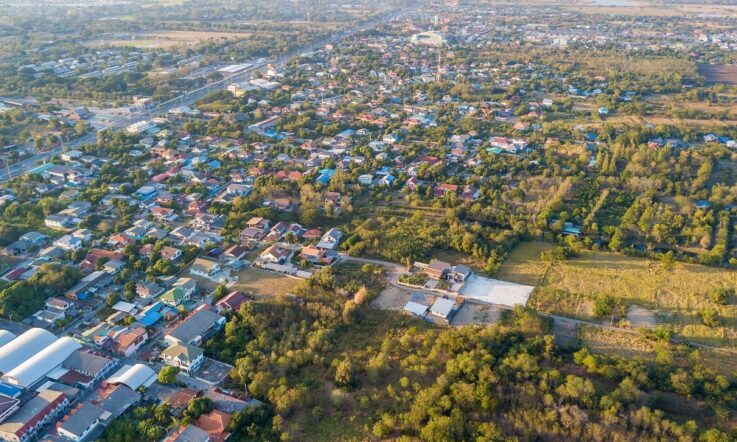Leading a school in a regional, rural or remote area comes with its own unique challenges. Research shows school leaders working in these settings are typically new to the role, and have a number of unique considerations to do with their location – such as the increased importance of their role in the community, staff retention and access to resources.
A report released by the Australian Government Department of Education, Skills and Employment, titled High-Impact School Leadership: regional, rural, and remote schools, acknowledges these unique challenges and outlines four key qualities of leaders achieving high impact in their schools.
It details findings from a three-phase research project conducted by a team of academics from the University of New South Wales (UNSW), Monash University and Curtin University. Phase one involved a series of scoping studies of empirical literature, phase two involved and a workshop with principal associations, and phase three involved completing four case studies and online interviews with 16 identified high-impact principals. Data from these activities informed the four key attributes of leaders demonstrating high impact. They are:
- An innovation imperative
- Collective responsibility
- A focus on teaching and learning
- Visibility in and commitment to the community
Lead author of the report and research Project Leader, Scott Eacott from the University of New South Wales, says ‘there are considerable inequities in Australian education, many of them experienced daily in regional, rural and remote schools. Addressing these issues requires innovative solutions not more of the same. This report provides ideas of how they could be addressed.’
An innovation imperative
High-impact principals involved in this research shared their belief that in order to confront these unique challenges, sticking to the status quo isn’t sufficient and innovation is required. Rather than focusing on the short-term by improving what they already do, they say they should be thinking beyond this and taking the steps to innovate and do things differently.
‘Flipping the question from “are children ready for school” to asking “are schools ready for children” helps school leaders, staff and communities to focus on high-impact strategies,’ the report reads. ‘…it also provides an opportunity for educators to “think outside the box” for solutions that best meet the needs of students and communities. The result is a shift from short-term to a longer-term perspective.’
Thinking in the longer term was a key part of effective innovation for these leaders. ‘It takes time to initiate, embed and sustain improvements in practice and outcomes,’ the report reads. ‘Rather than thinking of initiatives in two- or three-year strategic planning cycles, there is a need to think through what they look like for a generation (six to seven years) of students.’
Many principals said one of the ways they seek inspiration to innovate is by spending time visiting a range of other schools to pick up ideas to address identified problems in their own contexts. Crucially though, they then rework these ideas so they’re suitable for their own staff and community needs. ‘It is this working with all that is the basis of establishing collective responsibility for the delivery of outcomes,’ the researchers write.
Collective responsibility
Almost every leader involved in this research mentioned the important role all staff and the wider school community play in delivering outcomes for students. Within the school, fostering a culture of collective responsibility often involved teacher observation by colleagues (with room to provide feedback), focusing on a culture of collaboration not competition, and prioritising wellbeing and a work/life balance for all staff.
To promote this culture with the wider community, strong connections are seen to be beneficial. In one case study, the principal grew up locally and her connections with the community meant they trusted her to have the students’ best interests at heart, which can lead to greater levels of community support.
‘Shifting from the principal to the collective requires raising the visibility of educators in the community. Beyond naming all staff on the school website, specific strategies include having school leaders out and visible in the morning and afternoon when parents and community members are about. Similarly, having different staff write newsletter articles or social media posts – building the profile of as wide a range of staff as possible,’ the report reads.
‘Being open and transparent with decision-making, explaining why something was or was not done makes it possible for the largest number of people to understand – and speak to – decisions and how they contribute to the school’s purpose.’
A focus on teaching and learning
‘Leadership is second to only classroom teaching of all within-school factors for improving outcomes,’ the research team say, adding that shifting the focus from changing teaching to improving teaching is a marker of a high-impact school.
Teacher observation and collaboration is also an important part of this domain. For example, the research team found the greatest impact is achieved when school leaders explicitly schedule time during the week to work with teachers on their teaching, because this is effective in building relationships and also shows they prioritise what’s going on in the classroom.
‘While stressing the importance of a focus on teaching and learning for high-impact, outcomes and impact cannot be de-coupled from other social, cultural, health, economic and geographic disadvantage. The goal is to minimise these disadvantages by optimising school level activities to best meet the needs of students, families and communities.’
Visibility in and commitment to the community
The final attribute, visibility in and commitment to the community, speaks again to the unique position of school leaders working in regional, rural and remote settings. Many leaders shared how engaging with local Indigenous Elders is embedded into the running of the school and is a crucial element to demonstrating their commitment to the community.
It’s this work with communities that helps make it possible to be innovative and meet the immediate and long-term needs of students.
‘Principals spoke of the importance of being seen. Going out and having a meal, watching the football, or even having a drink at the pub so that the community can see you as a person and not just an educator… As a regional, rural and remote school leader you are more than just an educator but an important figure in the community and people’s lives.’
References
Eacott, Niesche, R., Heffernan, A., Loughland, T., Gobby, B., & Durksen, T. (2021). High-impact school leadership: regional, rural and remote schools. Commonwealth Department of Education, Skills and Employment, Australia. http://handle.unsw.edu.au/1959.4/unsworks_75297
The authors of this report say ‘flipping the question from “are children ready for school” to asking “are schools ready for children” helps school leaders, staff and communities to focus on high-impact strategies’.
With your colleagues, discuss your own school context. What aspects of its ethos and professional practice make you say ‘yes’ to the question of whether your school is ready for children? What aspects make you say ‘no’? In the upcoming school year, what area might you choose to work collectively on improving?
As a school leader, look at the strategies outlined in the article – from increasing visibility of all staff members to taking part in community life – which one could you implement now?



